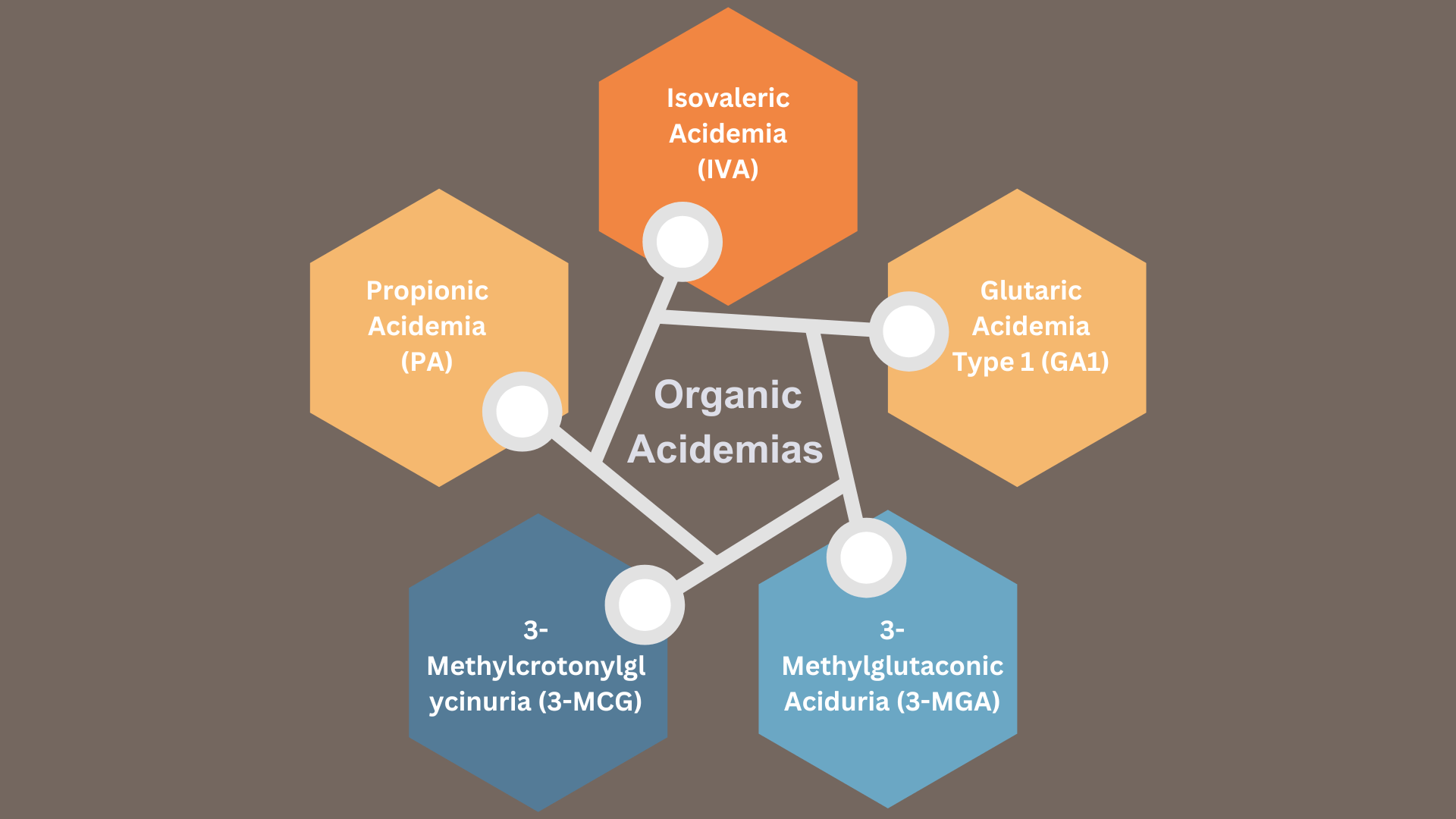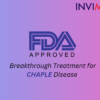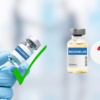Delving into the intricacies of organic acidemias, this blog explores these rare metabolic disorders’ challenges and treatment strategies. Central to the discussion is the role of Food for Special Medical Purposes (FSMP) in managing these conditions. We navigate the complexities of organic acidemias, unraveling their mysteries and exploring the latest advancements in diagnosis and treatment.
What Is Organic Acidemias?
Organic acidemias (OAs) arise from inheritable genomic aberrations that involve the absence or malfunctioning of critical enzymes, leading to the accumulation of abnormal and potentially harmful organic acid metabolites (acidemias). Elevated levels of these metabolites can be detected in blood and urine samples. These conditions disrupt the normal metabolic pathways of amino acids, particularly branched-chain amino acids, resulting in the accumulation of acidic compounds that are typically absent.
Clinical manifestations of organic acidemias are often severe, with most patients exhibiting symptoms during the neonatal period or early infancy. In milder cases, symptoms may manifest later in life, particularly during periods of illness, surgery, or prolonged fasting. Acute presentations may include liver dysfunction, lethargy, altered consciousness (encephalopathy), and seizures, while delayed manifestations may involve failure to thrive, developmental delay, and cardiomyopathy.
Incidence and Global Prevalence of Organic Acidemias
The incidence and severity statistics of organic acidemias offer valuable insights into the prevalence and impact of these metabolic disorders.
Incidence Rates: The occurrence of organic acidemia varies regionally, with Isfahan Province reporting an incidence rate of 27 per 100,000 live births, approximately 1 in 3,606 births. Notably, propionic acidemia/methylmalonic acidemia (PA/MMA) are the most commonly observed metabolic disorders in this area.
Worldwide Prevalence: While organic acidemias are categorized as rare disorders, their prevalence varies significantly worldwide. In British Columbia, Canada, the prevalence is estimated at 1 in 27,082 live births, while in Italy, it stands at 1 in 21,422 births. Factors such as high rates of consanguinity among Arab populations contribute to elevated prevalence rates in regions like Saudi Arabia.
Additionally, our research revealed that the incidence of organic acidemia was 1 in 3,606 live births, with propionic acidemia (PA) and methylmalonic acidemia (MMA) at 1 in 10,383 live births. Comparatively, the incidence rates were lower in Italy (13.7%), India (41.6%), Netherlands (41.6%), Singapore (32.3%), and Saudi Arabia (20%), while higher rates were observed in China (50%).
Inheritance Patterns of Organic Acidemias
The prevailing inheritance pattern is autosomal recessive, characterized by the requirement of biallelic mutations in the gene associated with the disorder for phenotypic expression. Typically, affected individuals are offspring of carrier parents, heterozygous for the mutated allele but phenotypically normal. Affected neonates typically exhibit a clinically asymptomatic state at birth, with symptom manifestation occurring later.
Autosomal recessive inheritance entails carrier parents with one wild-type and one mutant allele. Each pregnancy carries a 25% risk of producing an affected offspring, a 50% chance of an unaffected carrier, and a 25% likelihood of a non-carrier offspring. Siblings of diagnosed infants should undergo testing, with genetic counseling services offered to the family unit.
Types Of Organic Acidemias
The more prevalent types include:
- Propionic Acidemia (PA)
- Isovaleric Acidemia (IVA)
- 3-Methylcrotonylglycinuria (3-MCG)
- 3-Methylglutaconic Aciduria (3-MGA)
- Glutaric Acidemia Type 1 (GA1)
Symptoms And Signs
Neurological Symptoms: Signs of organic acidemias may include tremors, myoclonic jerks, and clonic movement disorders, suggesting possible neurological impairment due to metabolic disturbances.
General Health Issues: Infants, children, and adults with organic acidemias may experience lethargy, vomiting, and failure to thrive, indicating potential metabolic disorders that require further investigation.
Metabolic Abnormalities: Patients might exhibit hypoglycemia, electrolyte imbalances, and other metabolic disturbances, along with possible blood cell count abnormalities like neutropenia or thrombocytopenia.
Distinctive Odor: Some organic acidemias may be associated with a characteristic odor caused by metabolite buildup, which healthcare providers can recognize during clinical assessments.
Early identification of these signs is crucial for prompt diagnosis and intervention, leading to better management and outcomes for individuals affected by organic acidemias.
Diagnosis:
Urine Organic Acid Analysis: Urine organic acid analysis is a widely employed diagnostic tool for organic acidemias. By identifying abnormal organic acid levels in urine, this test offers crucial diagnostic insights.
Acylcarnitine: Another valuable diagnostic method for organic acidemias involves acylcarnitine profiles. Urine acylcarnitine analysis in individuals with organic acidemias and fatty acid oxidation disorders is assessed through Electrospray Ionization Tandem Mass Spectrometry (ESI-MS/MS), offering significant contributions to both differential diagnosis and treatment monitoring. Irregularities in acylcarnitine levels can signal specific defects linked to these metabolic conditions.
Initial Evaluation In Neonates
Early diagnosis of organic acidemias (OAs) requires a high level of suspicion, considering nonspecific initial symptoms such as lethargy, poor feeding, vomiting, rash, failure to thrive, seizures, and hypotonia. A family history of consanguinity and neonatal deaths can also serve as indicators. Additionally, characteristic signs like a nonspecific skin rash and a distinctive “sweaty feet” odor in patients with isovaleric acidemia (IVA) and glutaric acidemia type II aid in diagnosis. Differential diagnoses include Gram-negative sepsis, metabolic disturbances, and intracranial hemorrhage.
Initial laboratory evaluations should encompass a thorough assessment of sepsis and metabolic parameters such as blood glucose, electrolytes, urea, creatinine, and blood gas panels. A comprehensive test panel, including blood glucose levels, arterial blood gas, lactate, ammonia, and ketone levels, aids in identifying OAs, with observed abnormalities including hypoglycemia or hyperglycemia, hypocalcemia, severe acidosis, increased anion gap, ketosis, high ammonia levels (>200 μmol/L), and mild-to-moderate elevation in lactate levels, along with neutropenia.
Diagnostic investigations progress through serial stages, from comprehensive screening to specific disorder tests, including plasma amino acid analysis, urine organic acid analysis, enzyme assay, and genetic analysis.
Gas chromatography-mass spectrometry (GC-MS) and tandem mass spectrometry (MS) are crucial for identifying and measuring organic acid levels in urine, often corroborated by molecular testing to identify compound heterogeneous or homogenous pathogenic mutations in respective disease genes. In certain cases, confirmation of the diagnosis is obtained through enzyme activities in lymphoblasts and fibroblasts.
MRI Brain:
MRI imaging can reveal bilateral basal ganglia hyperintensities, particularly in the caudate and/or lentiform nuclei, indicating prior infarctions. Additionally, some patients may present with widened cerebrospinal spaces and opercule, along with white matter changes.
Antenatal Diagnosis:
Parental counseling is essential when a previous sibling has been diagnosed with OA, discussing the possibility of recurrence in the current fetus. IVF patients may consider preimplantation diagnosis using molecular analysis if their carrier status is known.
Prenatal diagnostic methods involve detecting diagnostic compounds in amniotic fluid and enzyme activity in amniocytes or chorionic villi. Delivery planning should prioritize facilities capable of managing potential metabolic or other complications. Following birth, expanded newborn screening should be performed at 36–48 hours to detect OAs. Suspicious results should be confirmed through plasma amino acid and urine organic acid level testing.
Differential Diagnosis:
In neonates, gram-negative sepsis, viral infections, congenital heart defects, neonatal abstinence syndromes, and metabolic errors may resemble organic acidemias (OAs). Abrupt onset and severe disease in sepsis can hint at OAs. Acidosis with ketosis and low lactate levels with hypoglycemia distinguish OAs. Hypoglycemia without ketosis suggests fatty acid oxidation disorders or enzyme deficiencies. Conversely, high ketone and lactate levels without hyperammonemia indicate mitochondrial disorders.
Cost of Screening
The expense of screening for Urea Cycle Disorders (UCDs) may fluctuate depending on the composition of the panel tests and the healthcare provider or laboratory administering the screening. In India, the Organic Acids Urine test, conducted using Gas Chromatography/Mass Spectrometry, costs ₹7,000.
Treatment
The management of organic acidemias generally entails a multifaceted approach integrating dietary interventions, pharmacotherapy, and supportive measures aimed at symptom mitigation and complication prevention.
Therapeutic Care
Infants diagnosed with organic acidemias require comprehensive care from a multidisciplinary team consisting of a biochemical geneticist, nephrologist, neurologist, and intensive care specialist.
- Treatment strategies focus on three main objectives: reducing the production of toxic intermediates by withholding enteral intake for 24–48 hours and suppressing catabolism, enhancing the elimination of toxic metabolites, and addressing systemic complications.
- During acute decompensation, intensive care management is essential to assess metabolic stability, manage metabolic acidosis and hyperammonemia, and treat any underlying infections aggressively.
- Nutritional support involves slowly reintroducing proteins after 48 hours, providing sufficient calories, and initiating intravenous lipid therapy.
- Close monitoring of metabolic parameters, electrolytes, glucose, and triglyceride levels is crucial, with interventions such as insulin infusion for hyperglycemia and hydration for metabolic acidosis.
- Severe hyperammonemia may necessitate treatment with an ammonium scavenger or carglumic acid, with hemodialysis considered in rare cases of ammonia levels exceeding 400 µmol/L.
- Follow-up care post-intensive care unit discharge involves regular monitoring by pediatricians and specialists to ensure ongoing management and support.
- Additionally, medications such as metronidazole and L-carnitine may be prescribed to aid in symptom management during acute decompensation.
Management Care
In essence, the management of organic acidemias (OAs) typically encompasses the following strategies:
- Reversing or preventing catabolism.
- Minimizing exposure to compounds that cannot be metabolized.
- Removing the produced “toxins” through scavenging.
- Substituting non-produced downstream intermediates.
- Enhancing disturbed metabolic processes with cofactors and supplements.
- Addressing complications utilizing conventional treatment approaches.
Dietary Management and Nutrition Role Of Organic Acidemia
In terms of dietary management, a gradual introduction of a low-protein diet is essential to facilitate growth and development, with meticulous monitoring of patient progress. Reduction in natural protein intake is recommended, along with the utilization of amino acid mixtures devoid of offending amino acids. Elevated leucine levels, known to impede growth, underscore the significance of carbohydrates and fats for optimal caloric provision.
The goals of nutrition management include minimizing the buildup of harmful metabolites, ensuring sufficient nutrient intake for proper growth and development, sustaining normal plasma amino acid levels, and averting catabolic processes. Commonly utilized supplements such as Levocarnitine, biotin, hydroxocobalamin, riboflavin, and pantothenic acid play pivotal roles in the management of organic acidemias.
Market Size Of Levocarnitine, Biotin, Riboflavin, and Pantothenic acid
The L-Carnitine market, encompassing Levocarnitine, attained a valuation of USD 189.60 million in 2022 and is anticipated to achieve USD 295.20 million by 2030, demonstrating a growth rate of 5.69% annually. As per analysis from Straits Research, the worldwide L-Carnitine market reached USD 177 million in 2021 and is estimated to surge to USD 267.60 million within a specified timeframe.
The Biotin supplement market, valued at US$ 2,708.2 million in 2018, is forecasted to reach US$ 8,331.0 million by 2033, with a robust CAGR of 8.5% over the forecast period. Riboflavin, or vitamin B2, is estimated to have a market size of USD 451.57 million in 2024, projected to increase to USD 623.06 million by 2029, with a growth rate of 6.65% during this period. Likewise, Pantothenic Acid, known as vitamin B5, is anticipated to exceed US$ 750.7 million by 2028, demonstrating a Compound Annual Growth Rate (CAGR) of 6.2% from 2021 to 2028.
Dietary Restrictions in Organic Acidemias
Individuals with organic acidemias must limit their consumption of protein-rich foods, including meat, fish, cheese, and other high-protein sources. This dietary restriction is essential due to difficulties in metabolizing specific amino acids inherent in these conditions. By minimizing protein intake, patients can mitigate the risk of complications associated with these metabolic disorders.
Food for Special Medical purposes
Specialized amino acid-based formulas, meticulously crafted to provide essential nutrients while excluding specific amino acids such as methionine, threonine, valine, isoleucine, lysine, and tryptophan, which may be metabolically challenging for individuals with organic acidemias. Additionally, the inclusion of carbohydrates and fats is imperative to ensure sufficient caloric intake for optimal growth and development.
These dietary interventions aim to mitigate the accumulation of toxic metabolites, maintain plasma amino acid concentrations within physiological ranges, and inhibit catabolic processes, thus promoting favorable health outcomes in organic acidemia patients.
Notably, these specialized formulas are engineered to encompass all amino acids found in protein while eliminating those that cannot be metabolized effectively. For example, formulations tailored for methylmalonic acidemia (MMA) or propionic acidemia (PA) restrict methionine, threonine, and valine intake, while those designed for glutaric acidemia type 1 (GA 1) exclude lysine and provide minimal amounts of tryptophan for optimal management.
Specialized gel products are available for managing organic acidemias such as Methylmalonic Acidaemia (MMA), Propionic Acidaemia (PA), and Glutaric Aciduria Type 1 (GA-I). These gel-based Foods for Special Medical Purposes (FSMPs) can be introduced into the diet of affected individuals aged 6 months to 5 years for enteral use, under the supervision of a managing clinician.
Market Analysis
The market size for Methylmalonic Acidemia is projected to reach $14.78 billion by 2032, with a Compound Annual Growth Rate (CAGR) of 5.0%. The propionic acidemia market saw significant effects from the COVID-19 pandemic.
There’s evidence indicating that patients with propionic acidemia who contract COVID-19 might face risks of metabolic decompensation. However, the infection’s clinical course is typically mild, and recovery is achievable without severe clinical consequences.
Conclusion
In conclusion, the management of organic acidemias necessitates tailored dietary interventions, where medical foods and Foods for Special Medical Purposes (FSMPs) play a pivotal role. These specialized products offer essential nutrients while excluding components that may exacerbate metabolic abnormalities. As the market for medical foods and FSMPs continues to grow, it underscores the increasing recognition of the importance of nutrition in managing these complex metabolic disorders.
However, ensuring widespread access to these specialized products and further research into their efficacy and safety remain ongoing challenges. Continued efforts in research, development, and accessibility are crucial for improving the quality of life and outcomes for individuals living with organic acidemias.
Written By
Aswini PriyaMedical Content Writer
Reviewed By
Dr. AnchalMedico Expert
Last Updated
18 Mar 2024 | 12:01 PM (IST)










